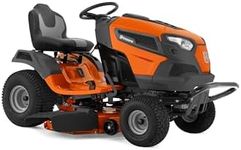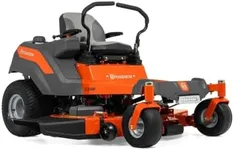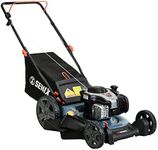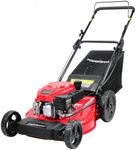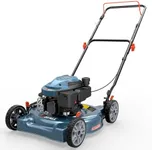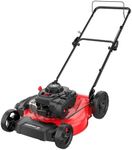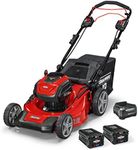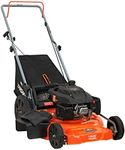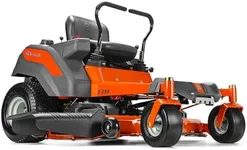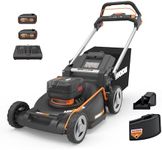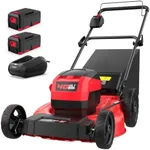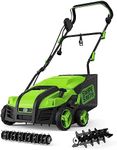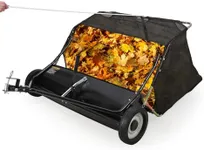Buying Guide for the Best Petrol Lawn Mowers
Choosing the right petrol lawn mower can make a significant difference in maintaining your lawn efficiently and effectively. Petrol lawn mowers are known for their power and ability to handle larger lawns with ease. When selecting a petrol lawn mower, it's important to consider various specifications to ensure you get the best fit for your needs. Here are some key specs to look at and how to navigate them.Engine PowerEngine power, measured in horsepower (HP) or cubic centimeters (cc), determines how powerful the mower is. A more powerful engine can handle tougher grass and larger lawns more efficiently. For small to medium lawns, an engine with 125-150cc is usually sufficient. For larger lawns or tougher terrain, consider an engine with 150-200cc or more. Choose based on the size of your lawn and the type of grass you have.
Cutting WidthThe cutting width refers to the width of the mower's blade and determines how much grass is cut in a single pass. A wider cutting width means fewer passes to mow the lawn, saving time. For small lawns, a cutting width of 16-18 inches is adequate. Medium lawns benefit from 18-21 inches, while large lawns may require 21 inches or more. Select a cutting width that matches the size of your lawn to optimize efficiency.
Cutting Height AdjustmentCutting height adjustment allows you to change the height at which the grass is cut. This is important for maintaining the health of your lawn, as different grass types and seasons require different cutting heights. Look for mowers with multiple height settings, typically ranging from 1 to 4 inches. Choose a mower with easy-to-adjust settings to accommodate various grass lengths and conditions.
Self-Propelled vs. PushSelf-propelled mowers have a drive system that moves the mower forward, reducing the effort needed to push it. This is especially useful for larger lawns or hilly terrain. Push mowers, on the other hand, require manual effort to move. If you have a small, flat lawn, a push mower may be sufficient. For larger or uneven lawns, a self-propelled mower can make the task much easier and less tiring.
Grass Clipping ManagementGrass clipping management refers to how the mower handles the cut grass. Options include bagging, mulching, and side discharge. Bagging collects clippings in a bag for easy disposal, mulching finely chops clippings and returns them to the lawn as fertilizer, and side discharge ejects clippings to the side. Choose based on your preference for lawn maintenance: bagging for a clean look, mulching for lawn health, or side discharge for convenience.
Fuel Tank CapacityFuel tank capacity determines how long the mower can run before needing a refill. A larger fuel tank means fewer interruptions during mowing. For small lawns, a smaller tank (around 0.5 liters) is usually sufficient. For medium to large lawns, look for a tank capacity of 1 liter or more to ensure you can mow without frequent refueling. Consider the size of your lawn and how often you want to stop for refueling.
Weight and ManeuverabilityThe weight of the mower affects how easy it is to maneuver, especially around obstacles and tight corners. Lighter mowers are easier to push and turn, while heavier mowers may offer more stability. For small lawns with many obstacles, a lighter mower is preferable. For larger, open lawns, a heavier mower can provide a smoother cut. Consider your lawn's layout and your physical ability to handle the mower's weight.
Durability and Build QualityDurability and build quality determine how long the mower will last and how well it can withstand regular use. Look for mowers with sturdy construction, such as steel decks and high-quality components. A durable mower will require less maintenance and provide reliable performance over time. Choose a mower with a solid build to ensure it can handle the demands of your lawn care routine.
